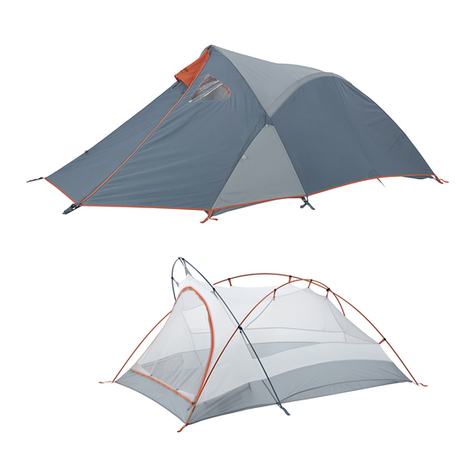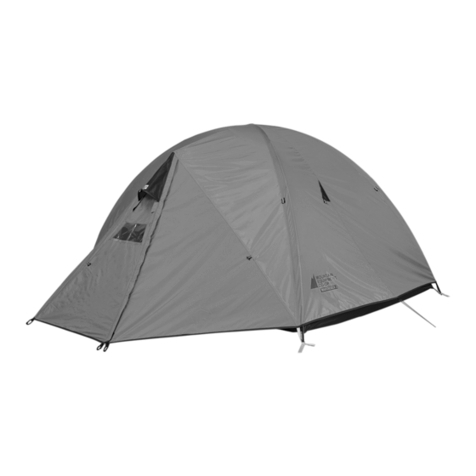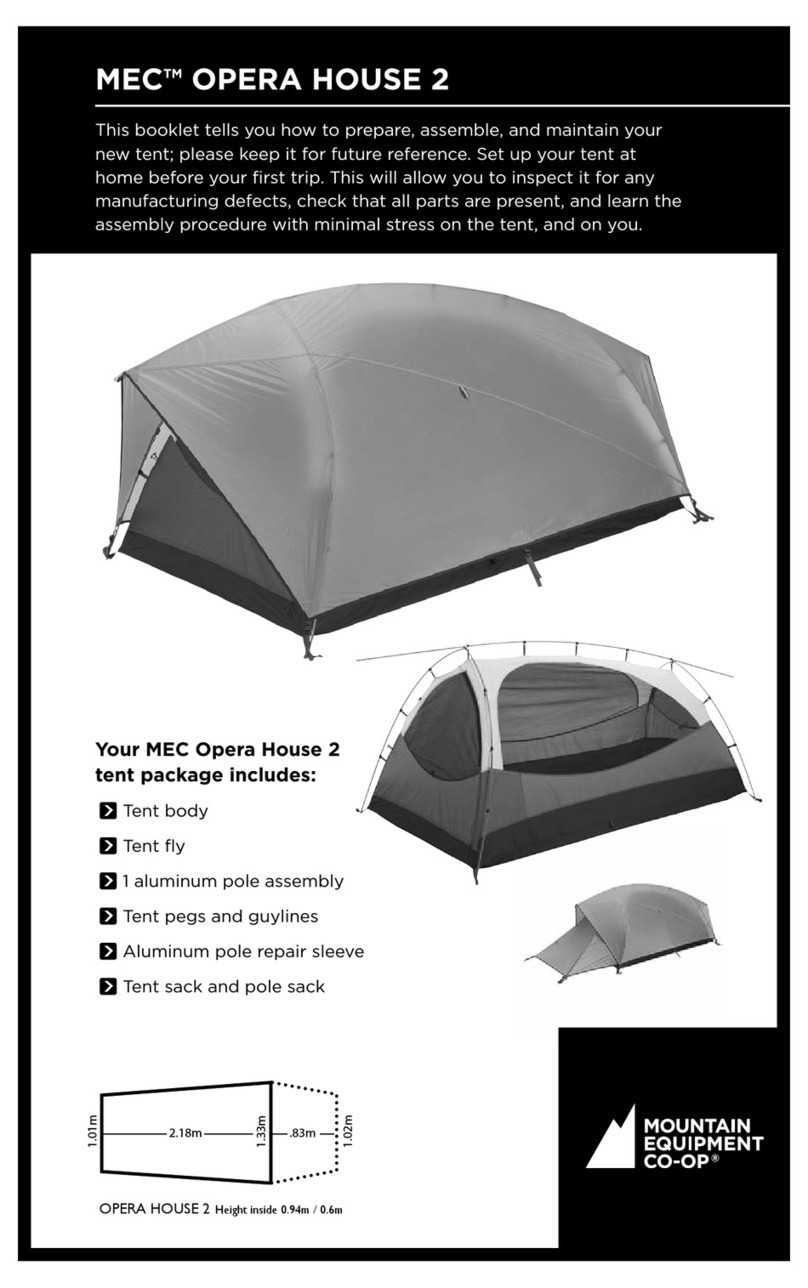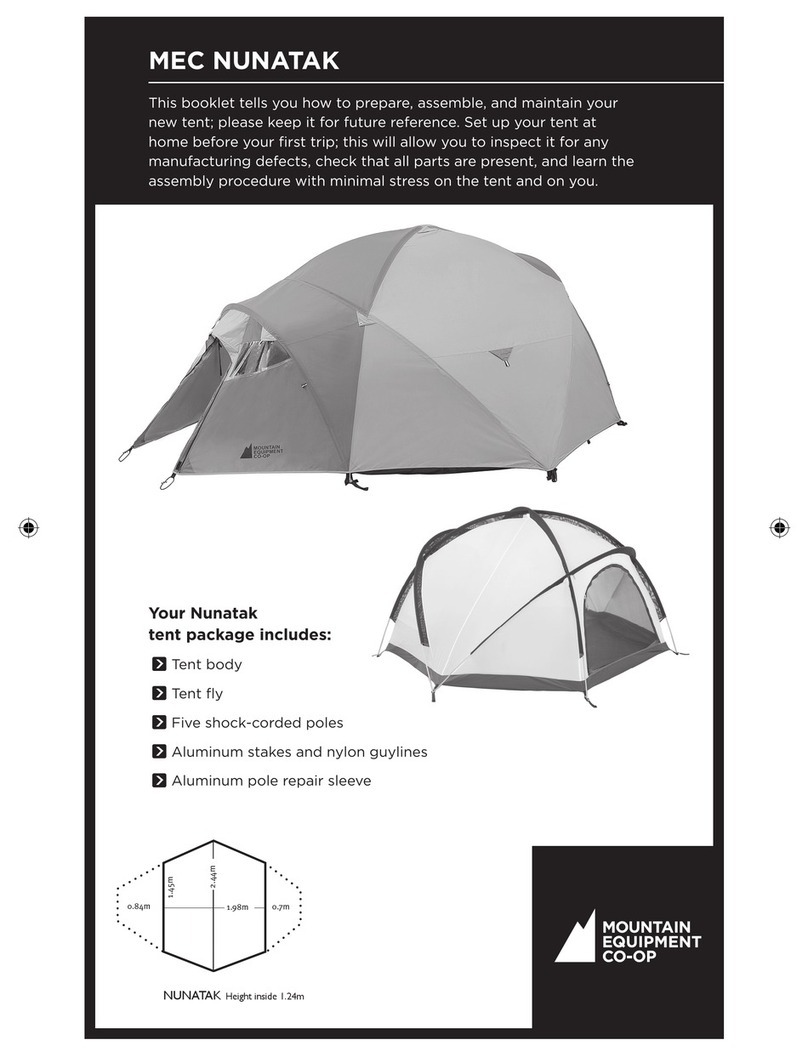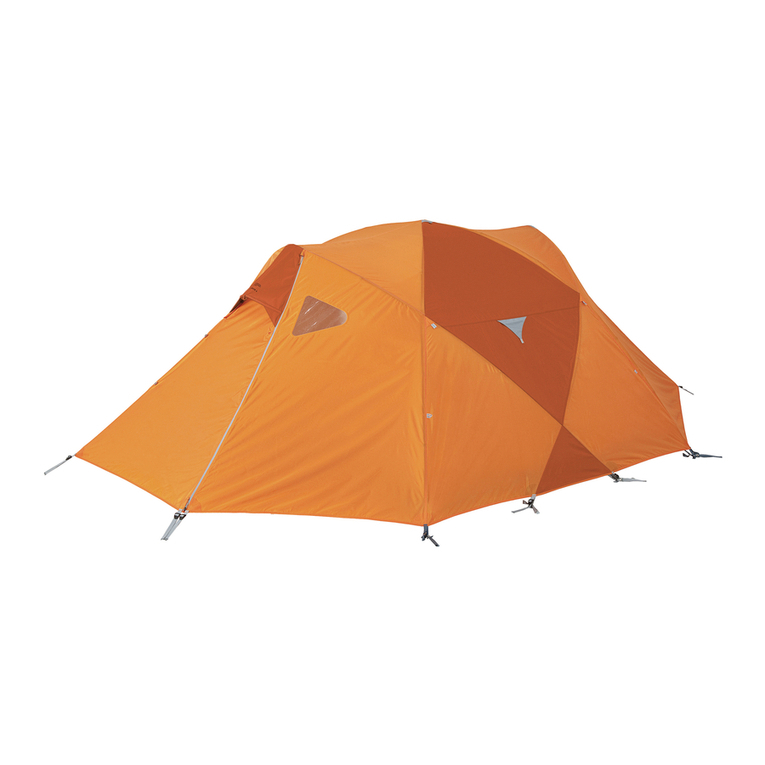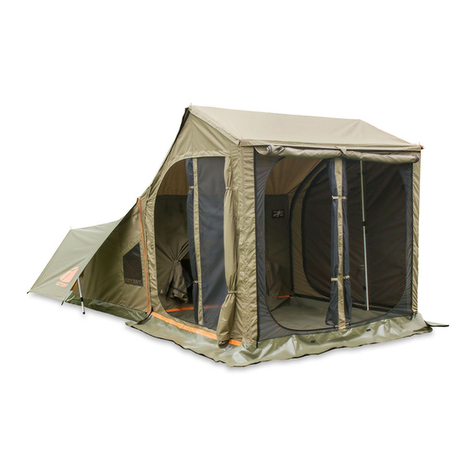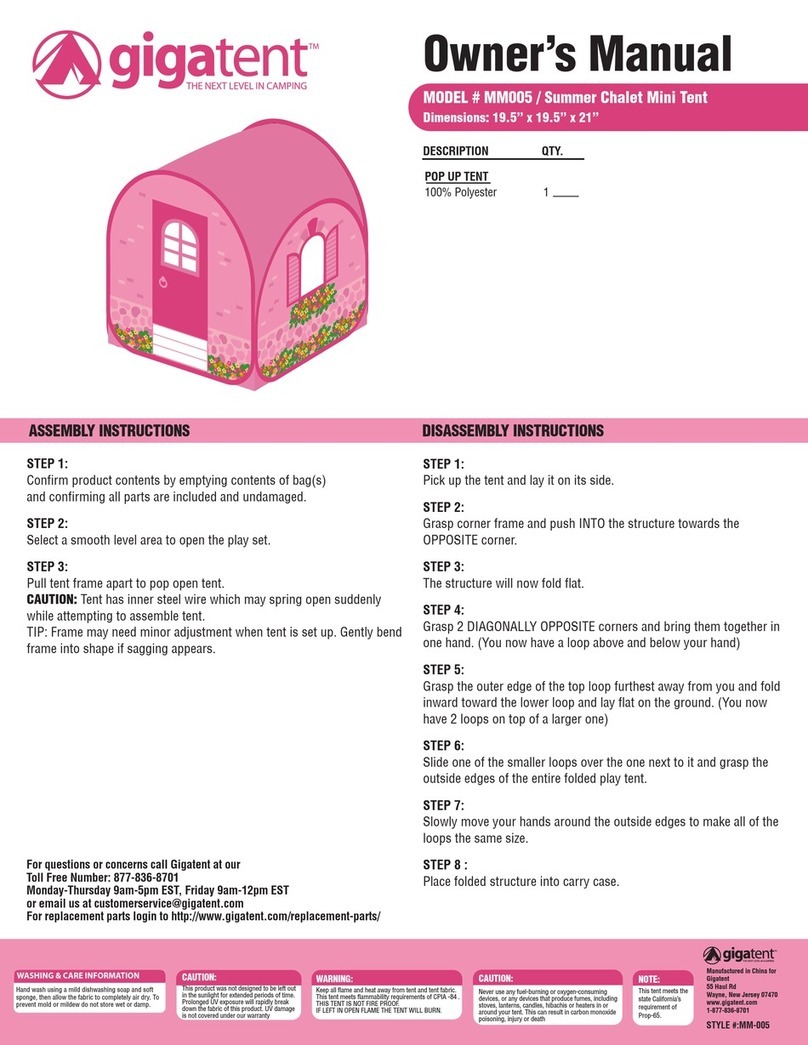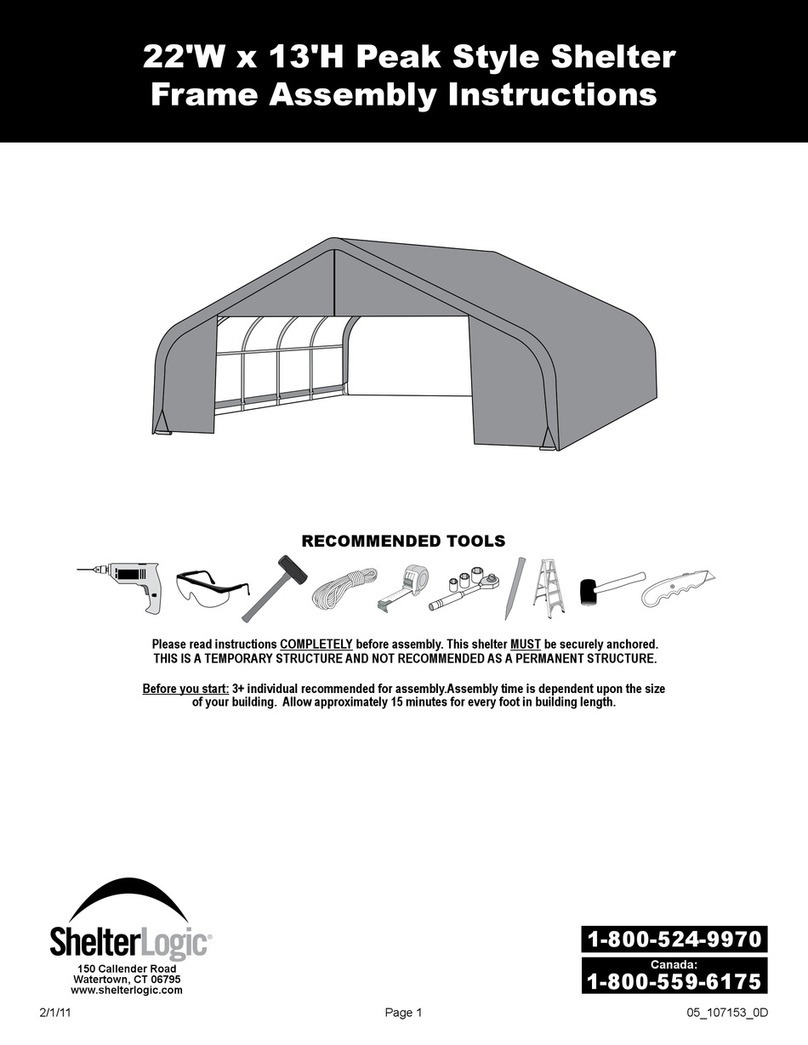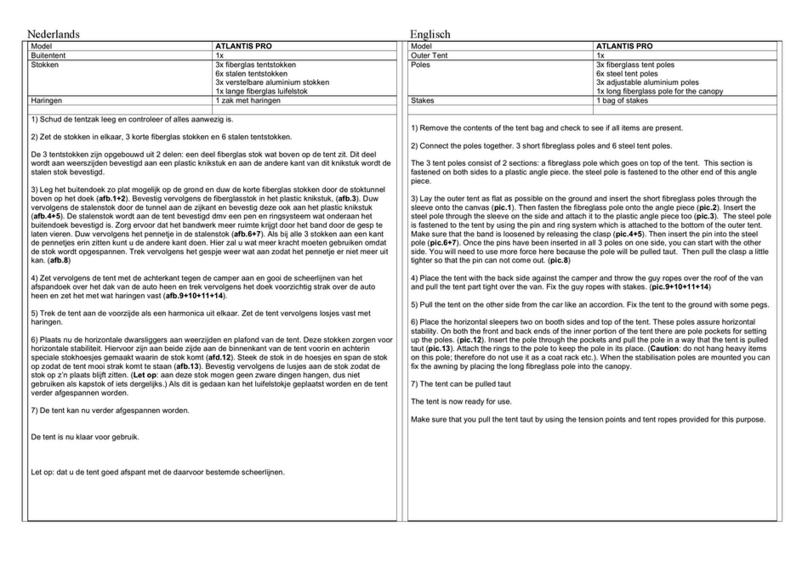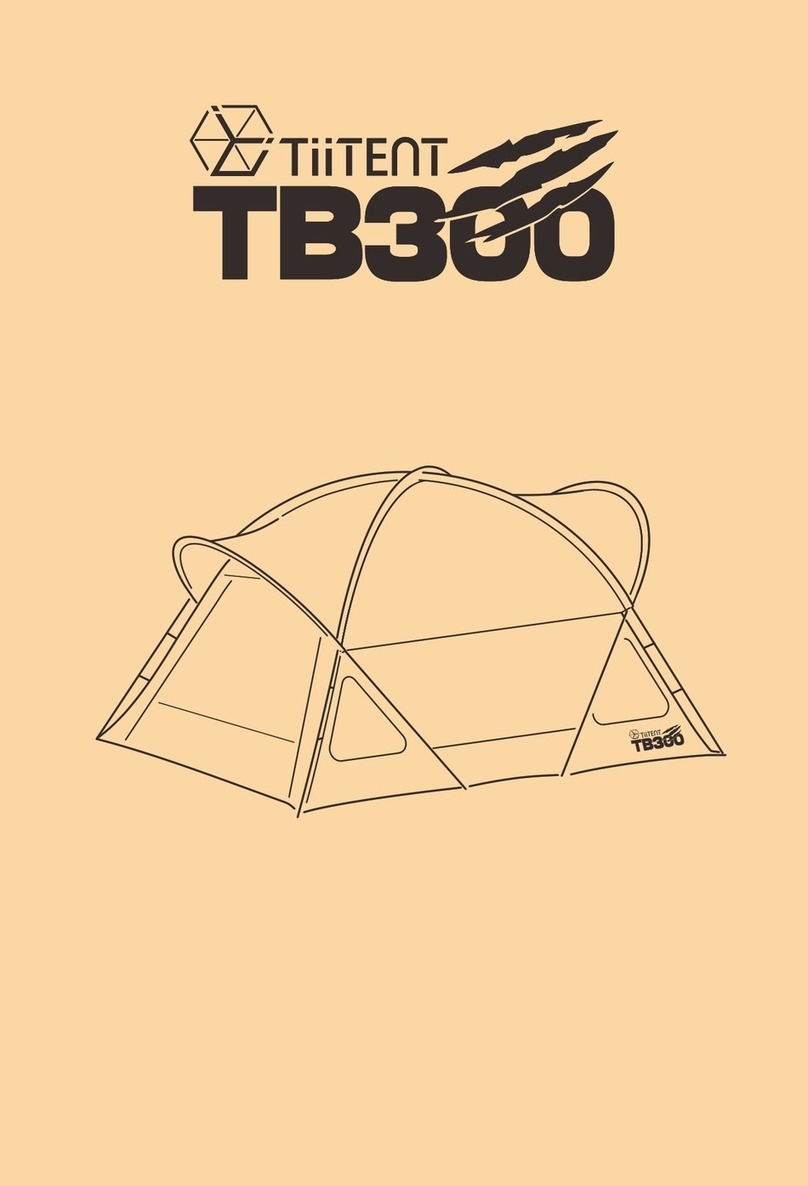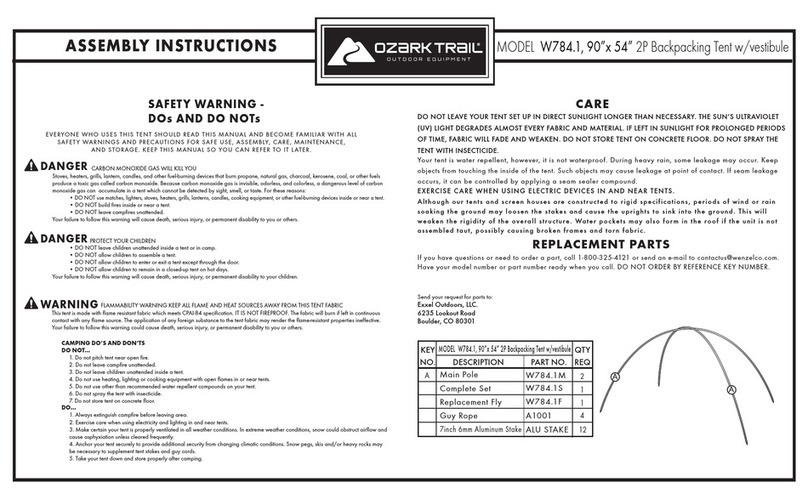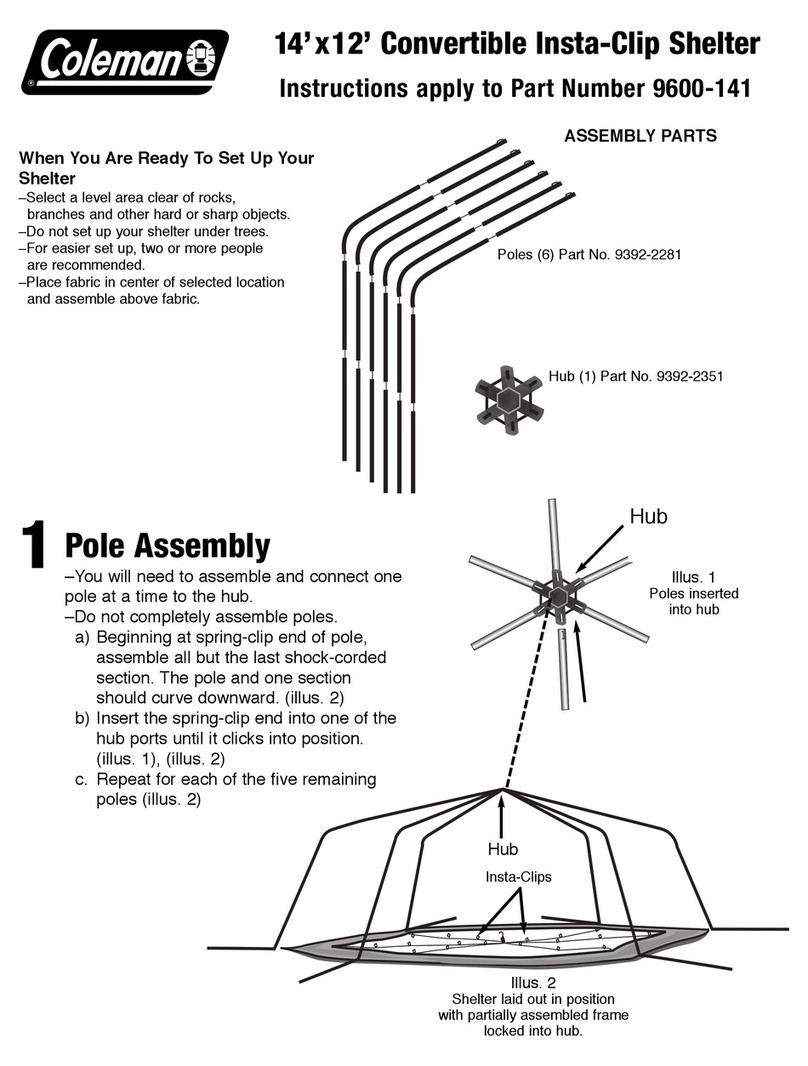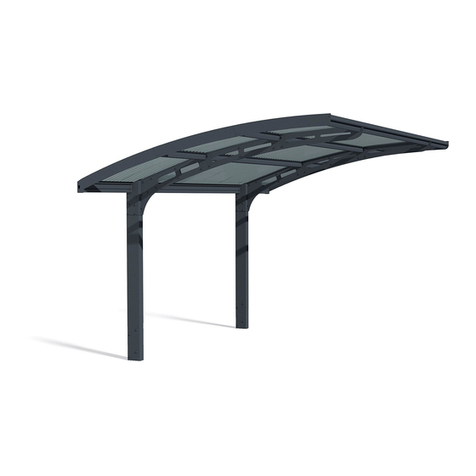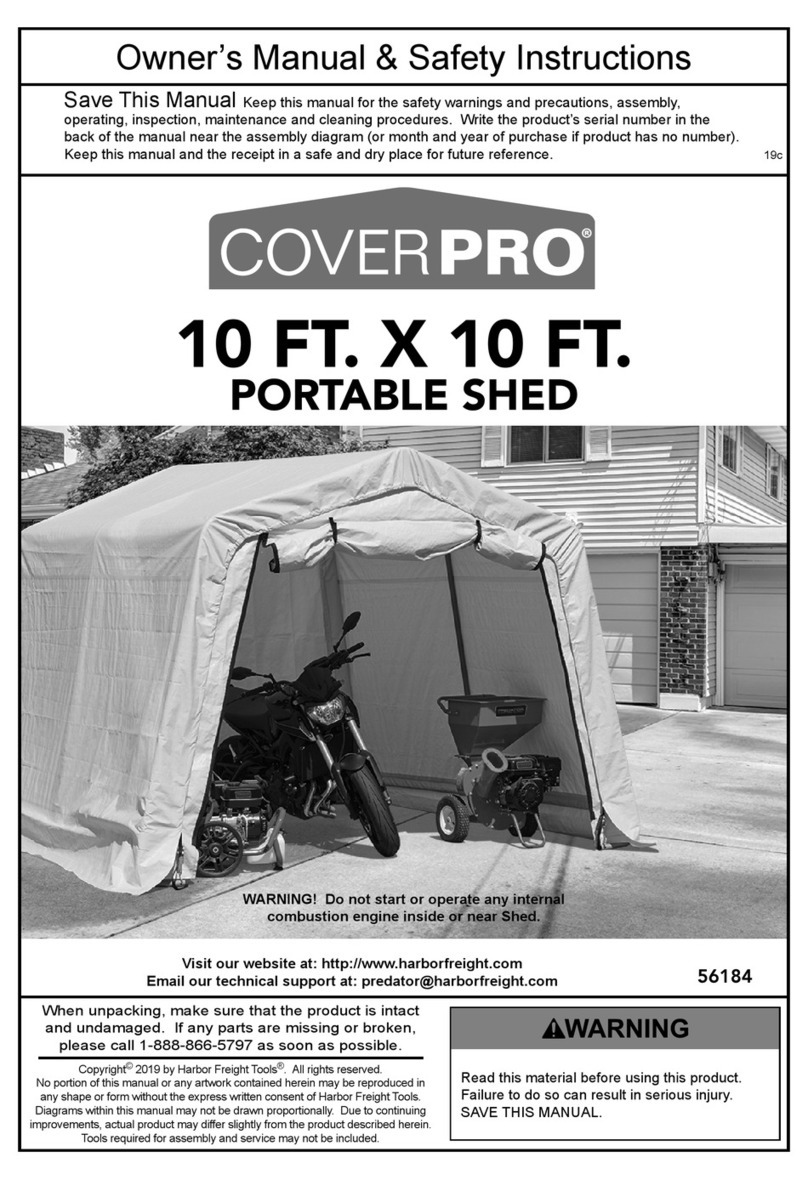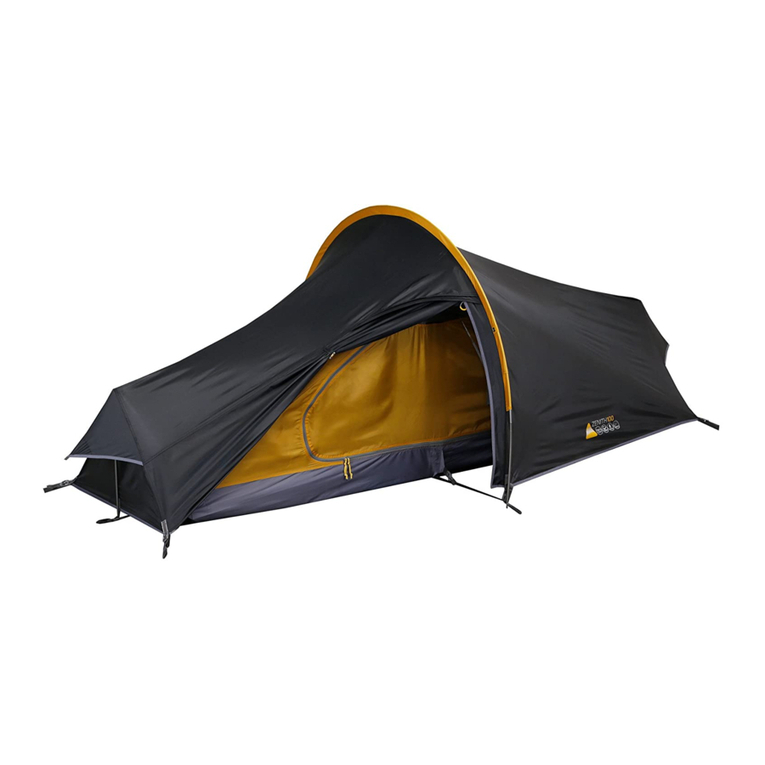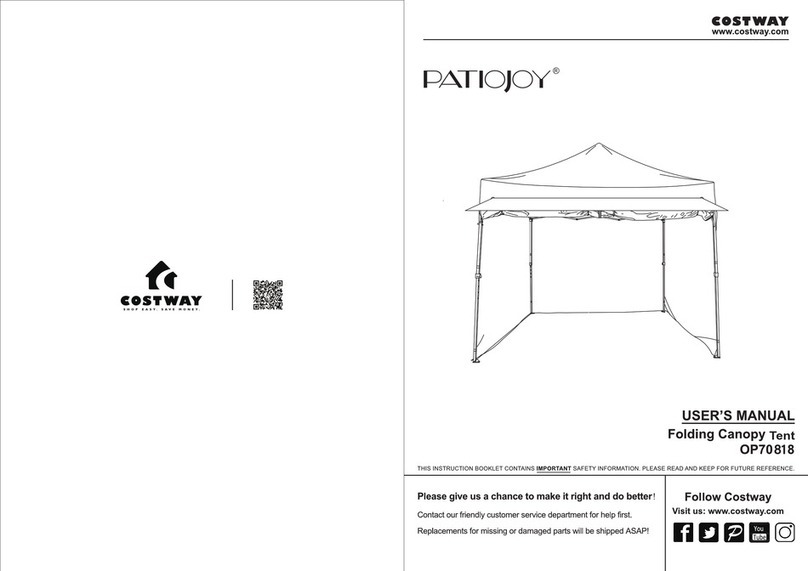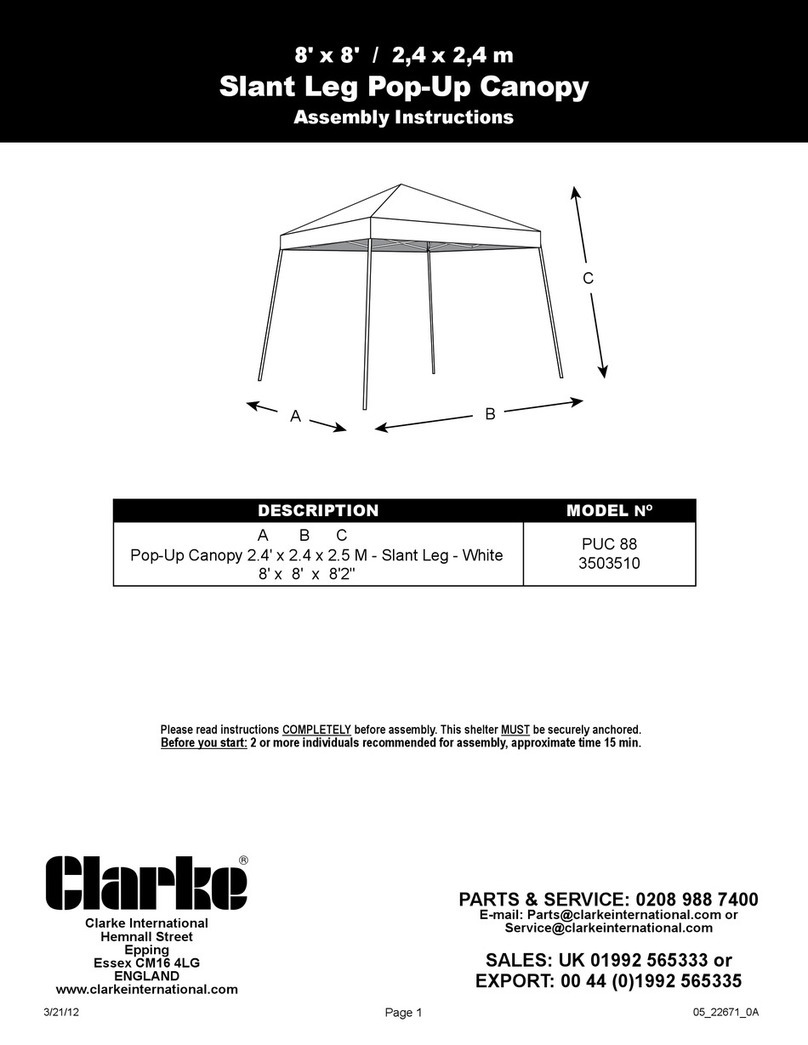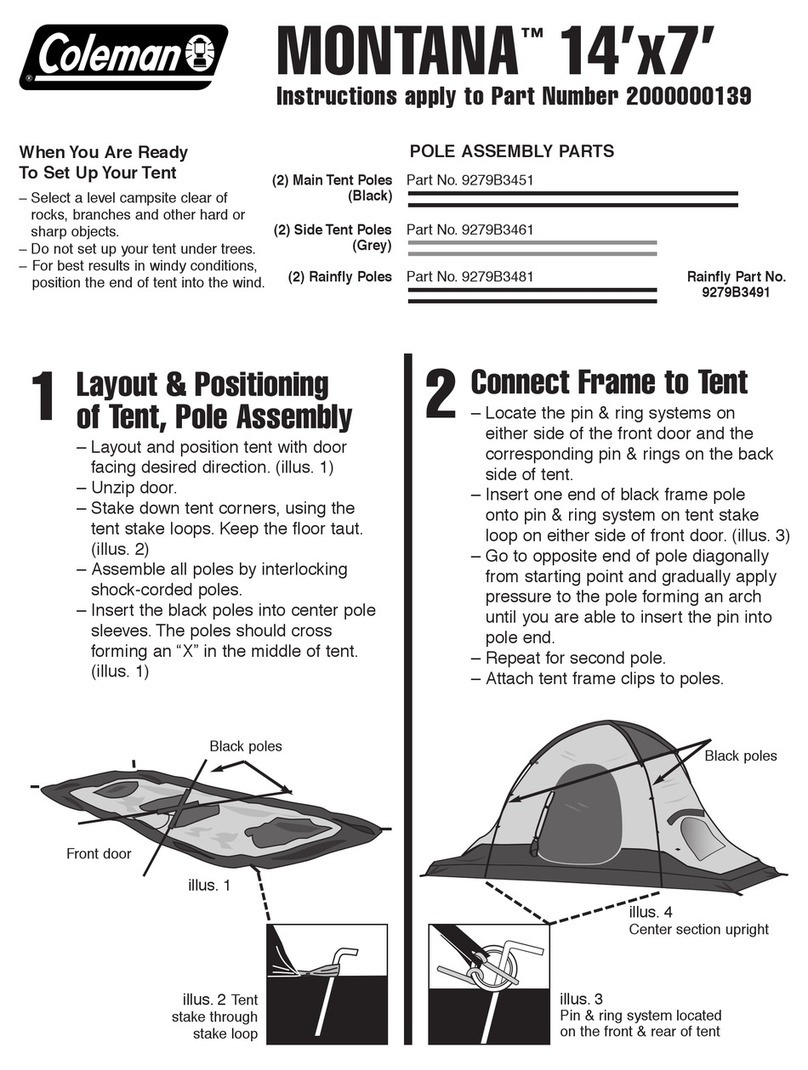The Mercury has four corner guy line attachment points so you can rig it
increasingly securely in response to actual or anticipated winds.
• Guy lines should counter-balance one another for maximum stability
and minimum stress on the tent.
• As with any tent, a little shelter provided by trees, rock, or snow walls
will make for a quieter night’s sleep in windy conditions.
The 7001-T6 aluminum stakes included with the tent are suitable for
general use on relatively soft ground. However, in very hard-packed
ground you will need stronger (and heavier) stakes that can withstand
the force needed to drive them in. On snow, sand, or other loosely packed
surfaces, wider T-Stakes or aluminum snow stakes will hold better; these
stakes hold best buried horizontally. You can also improvise with other
“stakes” (hiking staffs, ice axes, branches, rocks, trees), using the tent’s
stake loops or cord as required.
When packing for your trip, consider the conditions you’ll likely encounter
and what sort of anchors you’ll require. You can often leave several of the
supplied pegs at home and replace them with improvised anchors, which
will save weight and space in your pack.
Proper ventilation is the key to minimizing condensation in any tent.
Keep fabric doors open as widely as the prevailing weather permits. If
bugs or drafts aren’t a problem, leave mesh doors open, too. Crack each
door open from the top down; warm, moist air rises and will escape
through high openings. If the design of your tent allows for it, have
openings at both ends or both sides of the tent to allow air to ow
through for best ventilation. On very hot nights, when you are condent
there will be no rain or dewfall, you can leave the ysheet off and use
the inner tent alone as a “bug tent.”
The most important consideration in taking down a tent is to avoid
stressing the poles and fabrics. First, disconnect guy lines and release
the tension from the tent. Next, release all the poles. If your tent has pole
sleeves, push the poles out of the sleeves instead of pulling them out.
To minimize the stress on the bungee cord in the poles and to speed
disassembly, fold each pole in half rst, then fold down towards the
outsides, two sections at a time.

